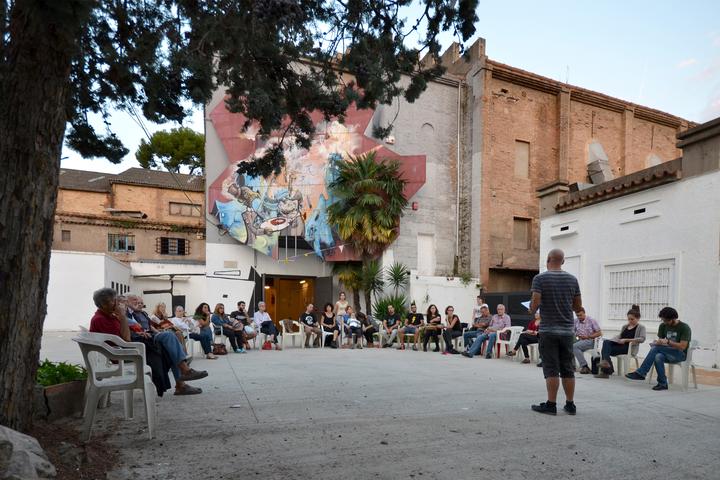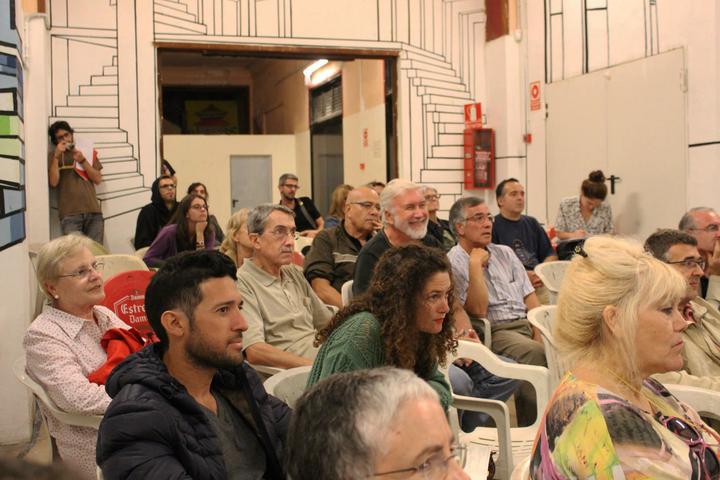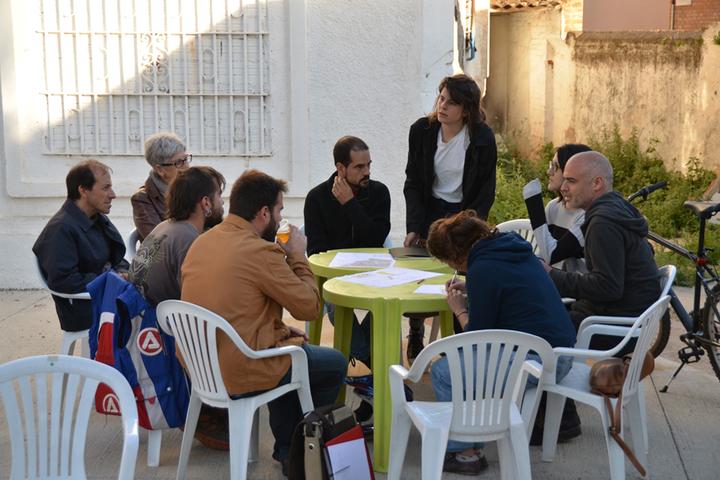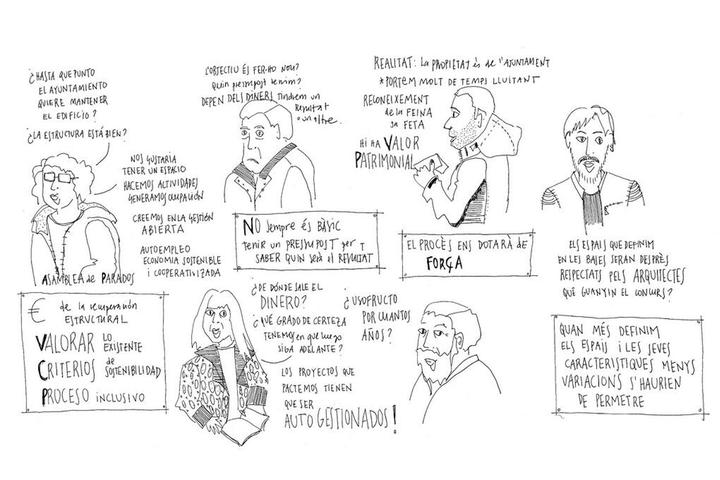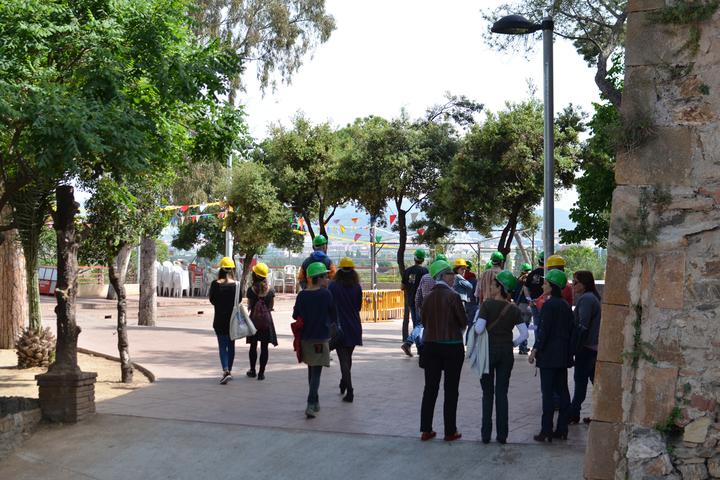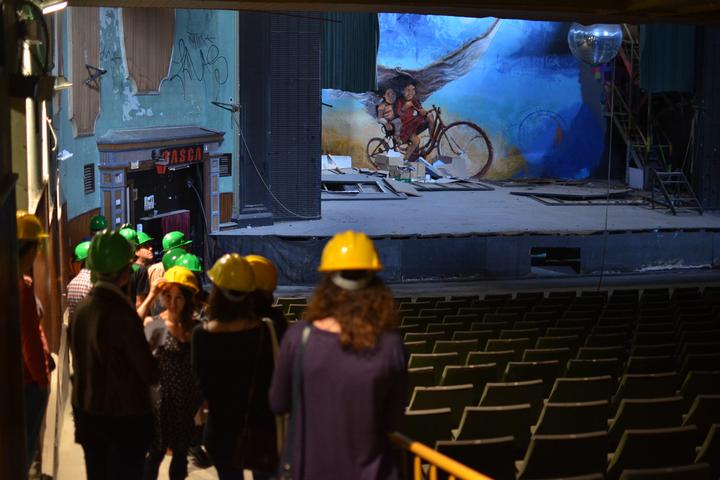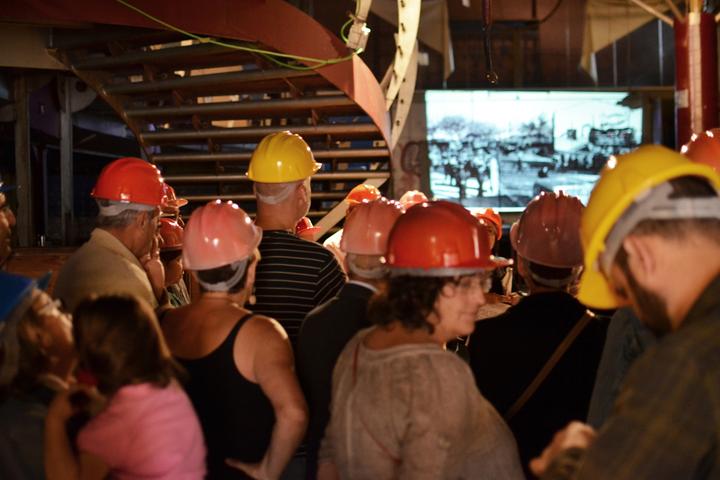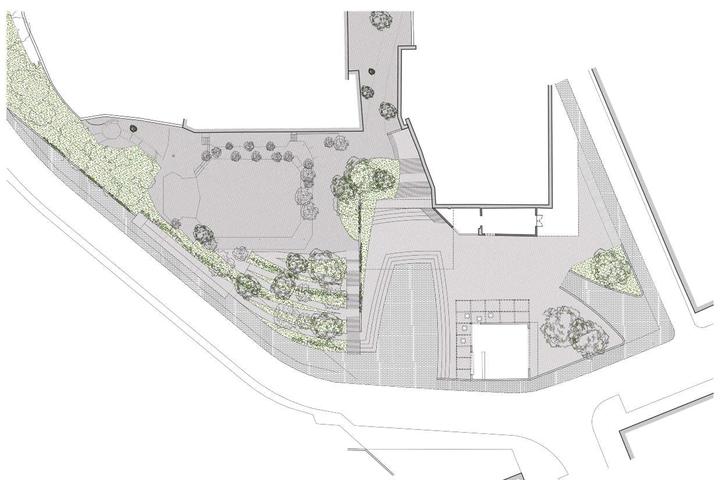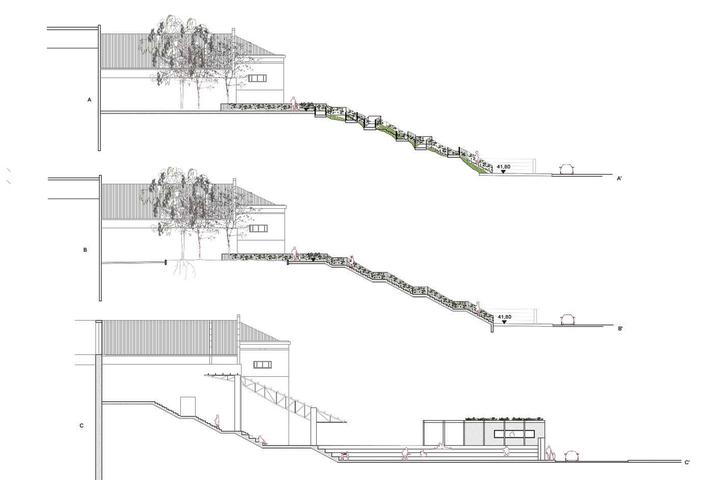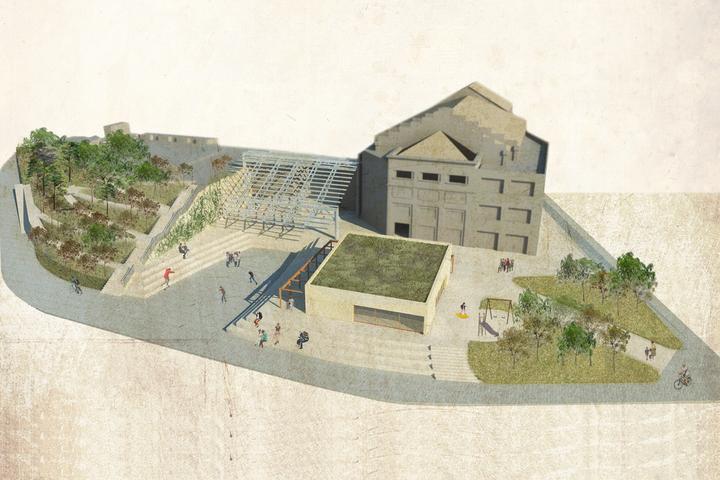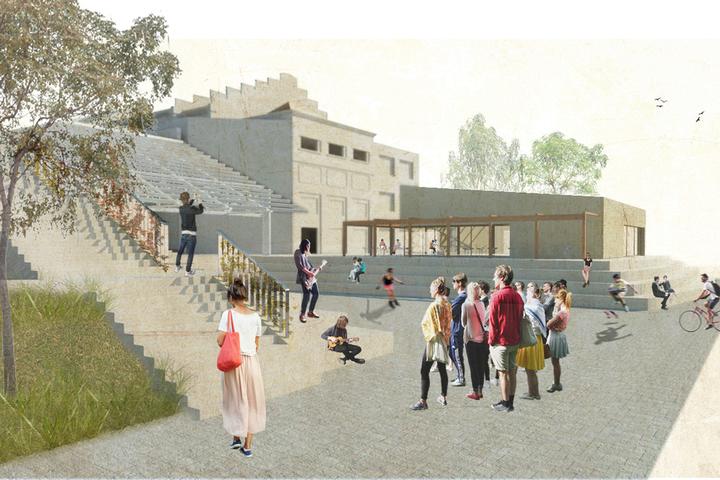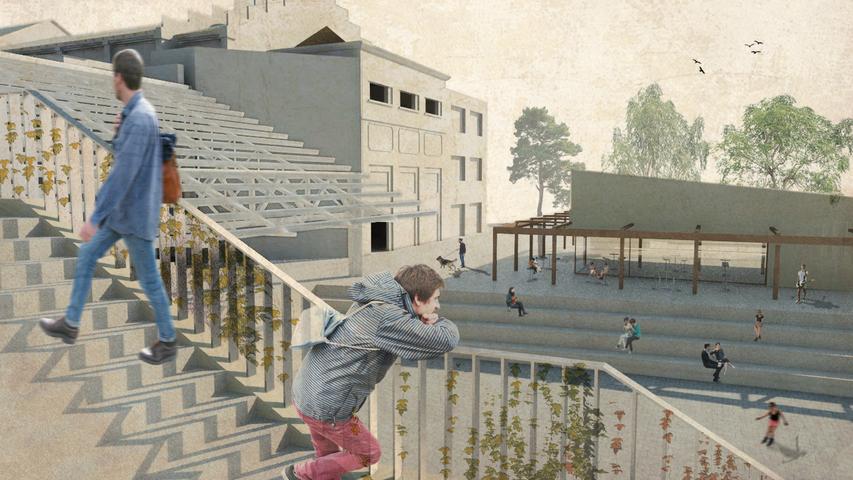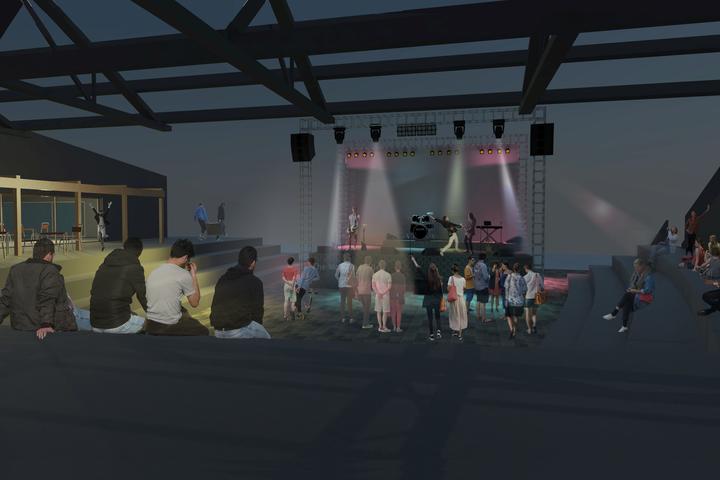NUEVO ATENEU EN SANT BOI
Participatory Process for Configuration of New Ateneu de Sant Boi
The Ateneu Santboià is a hundred-year-old facility in Sant Boi de Llobregat, a city in the Barcelona metropolitan area. Despite its popular and self-managed origins, it became a point of reference in the region, with a theater-cinema with capacity for a thousand persons, a large dance hall, a school, etc. At the end of the last century there was a process of progressive degradation, in which the cultural space was losing weight, giving way to a bingo and a discotheque that finally were also closed down.
The project is part of the current context, after the Ajuntament de Sant Boi bought the farm where the Ateneu is located in 2010. In this way, a new stage was entered after a difficult process initiated thirteen years ago with the auction of the land, which ended up in the hands of a private developer, and the subsequent mobilization to demand its recovery, including the claiming occupation of the building.
Parallel to this process, the assembly of Amics de l'Ateneu Santboià, managing body and resident of the equipment, sees clearly its need to adapt to the changes and sees fit to establish channels of communication with the city council and diverse networks of independent culture, as well as other collectives that work promoting the creation of participatory habitat.
It is at this moment when the city council, after multiple meetings with the different agents - Amics de l'Ateneu, Straddle3 and LaCol - decides to convene a binding participatory process open to all citizens. The objective is to establish a consensus strategy and a working group capable of leading the reform process, which focuses on the redefinition of the equipment.
The process does not start from scratch. A plan of uses developed in a citizen commission in 2010 and several structural studies commissioned by the city council was taken into account. Other examples of collaborative recovery of collective spaces were also invited to explain their experience. These are projects with a very high degree of social cohesion between agents, as well as a good relationship between resources used and results obtained, both at a spatial and constructive level and at a programmatic level.
The project is developed in nine months in which has been analyzed and discussed questions about what new uses will house the new equipment, how these spaces should be and which management models are the most appropriate. Initially it was necessary to overcome a climate of distrust among the users of the equipment, the nearest neighbors, the managing body and the Town Hall. For this reason, and with the aim of guaranteeing maximum transparency and communication, a participatory, inclusive and open methodology was designed; seeking to involve the maximum diversity of actors and establish neutral dissemination channels to show, step by step, the information generated.
The process has been articulated in three different phases. A first of data collection and analysis of the conditions focused on interviews with key informants for the preparation of the process. A second, using as main tool the six workshops where deliberate on the three axes of the project: uses, spaces and management. Finally a moment of return and validation of everything worked in these months.
The creation of a proper image of the process was necessary to save the distrust that citizens had towards some actors, in some cases the City Council, in others the Amics del Ateneu Santboià. Much effort was put into the web page as the main tool of transparency, where anyone could find all the documents generated by the process, and even intervene in discussion forums.
The fact that some spaces were closed for years generated a lack of knowledge about their current state. The two days of organized visits managed to awaken the interest of hundreds of people.
In the process we were able to experiment with new tools, either because we applied them for the first time or because we created them as we saw the need. For example, the graphic account of the minutes of the meetings was very well received by the participants. Also the work to make more technical concepts more accessible had an even better response than what we expect as a dynamic team. Thus we achieve a common language so that both people with technical knowledge and people without them could talk about rehabilitation budgets or necessary surfaces for each space.
The project is part of the current context, after the Ajuntament de Sant Boi bought the farm where the Ateneu is located in 2010. In this way, a new stage was entered after a difficult process initiated thirteen years ago with the auction of the land, which ended up in the hands of a private developer, and the subsequent mobilization to demand its recovery, including the claiming occupation of the building.
Parallel to this process, the assembly of Amics de l'Ateneu Santboià, managing body and resident of the equipment, sees clearly its need to adapt to the changes and sees fit to establish channels of communication with the city council and diverse networks of independent culture, as well as other collectives that work promoting the creation of participatory habitat.
It is at this moment when the city council, after multiple meetings with the different agents - Amics de l'Ateneu, Straddle3 and LaCol - decides to convene a binding participatory process open to all citizens. The objective is to establish a consensus strategy and a working group capable of leading the reform process, which focuses on the redefinition of the equipment.
The process does not start from scratch. A plan of uses developed in a citizen commission in 2010 and several structural studies commissioned by the city council was taken into account. Other examples of collaborative recovery of collective spaces were also invited to explain their experience. These are projects with a very high degree of social cohesion between agents, as well as a good relationship between resources used and results obtained, both at a spatial and constructive level and at a programmatic level.
The project is developed in nine months in which has been analyzed and discussed questions about what new uses will house the new equipment, how these spaces should be and which management models are the most appropriate. Initially it was necessary to overcome a climate of distrust among the users of the equipment, the nearest neighbors, the managing body and the Town Hall. For this reason, and with the aim of guaranteeing maximum transparency and communication, a participatory, inclusive and open methodology was designed; seeking to involve the maximum diversity of actors and establish neutral dissemination channels to show, step by step, the information generated.
The process has been articulated in three different phases. A first of data collection and analysis of the conditions focused on interviews with key informants for the preparation of the process. A second, using as main tool the six workshops where deliberate on the three axes of the project: uses, spaces and management. Finally a moment of return and validation of everything worked in these months.
The creation of a proper image of the process was necessary to save the distrust that citizens had towards some actors, in some cases the City Council, in others the Amics del Ateneu Santboià. Much effort was put into the web page as the main tool of transparency, where anyone could find all the documents generated by the process, and even intervene in discussion forums.
The fact that some spaces were closed for years generated a lack of knowledge about their current state. The two days of organized visits managed to awaken the interest of hundreds of people.
In the process we were able to experiment with new tools, either because we applied them for the first time or because we created them as we saw the need. For example, the graphic account of the minutes of the meetings was very well received by the participants. Also the work to make more technical concepts more accessible had an even better response than what we expect as a dynamic team. Thus we achieve a common language so that both people with technical knowledge and people without them could talk about rehabilitation budgets or necessary surfaces for each space.

-
Portal de proceso participativo del Nou Ateneu
https://nouateneu.cat
-
This content has no related downloads

